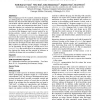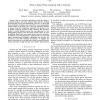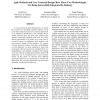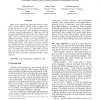26354 search results - page 105 / 5271 » How we refactor, and how we know it |
CHI
2010
ACM
14 years 5 months ago
2010
ACM
When designing novel GUI controls, interaction designers are challenged by the “immaterial” materiality of the digital domain; they lack tools that effectively support a refle...
GLOBECOM
2009
IEEE
14 years 5 months ago
2009
IEEE
—802.11 localization algorithms provide the ability to accurately position and track wireless clients thereby enabling location-based services and applications. However, we show ...
CPAIOR
2009
Springer
14 years 4 months ago
2009
Springer
Abstract. In constraint programming there are often many choices regarding the propagation method to be used on the constraints of a problem. However, simple constraint solvers usu...
AGILEDC
2008
IEEE
14 years 4 months ago
2008
IEEE
A core principle of Agile development is to satisfy the customer by providing valuable software on an early and continuous basis. For a software application to be valuable it shou...
CSMR
2008
IEEE
14 years 4 months ago
2008
IEEE
Many reverse engineering approaches have been developed to analyze software systems written in different languages like C/C++ or Java. These approaches typically rely on a meta-mo...




